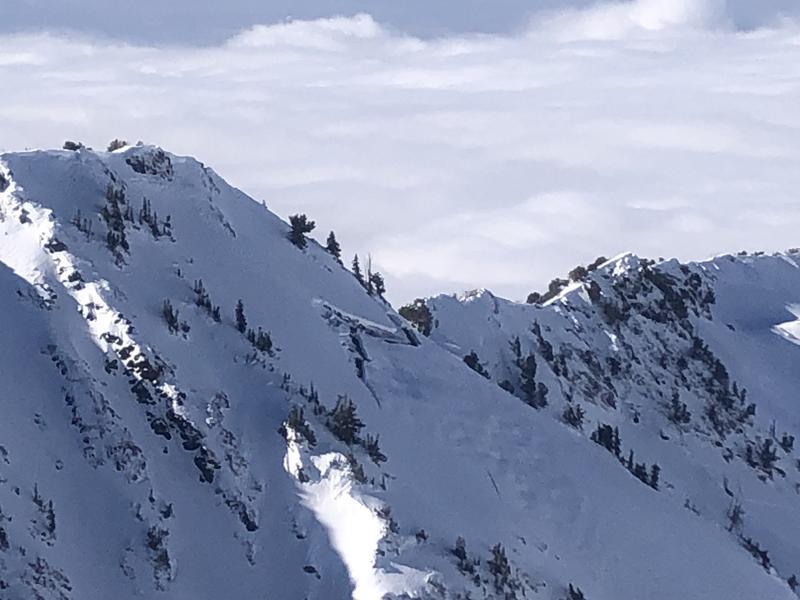Most ski areas are now closed to uphill travel as they open or prepare to open for winter operations. Resort uphill travel policies can be found
HERE.
Alta Ski Area has closed the Summer Road and access to Catherine's for lift area operations. Grizzly Gulch remains open.
This morning temperatures are mostly in the low teens F and some trailheads have temperatures in the single digits. Winds are blowing from the west 10-15 mph gusting 20-25 mph.
Today will be a repeat of yesterday. Sunny skies will allow temperatures to warm into the mid 20s F. Winds will continue blowing from the west at similar speeds as they are this morning.
Tonight skies will become cloudy ahead of a dry cold front that will pass over Utah on Friday. A few flurries are possible but that's it. More cold air will come behind this cold front with temperatures in the single digits F. Warmer air moves in on Saturday, and Sunday should have temperatures back in the mid 20s F.
Snow depths in the Central Wasatch Range are generally 3-4 feet above 9000 feet in elevation. Snow surface conditions vary a lot due to wind, sun, and cold temperatures. Northerly facing slopes hold soft snow that is still great powder because it is faceting and weakening. With such cold temperatures and low sun angles (meaning minimal solar heat), the fledgling snowpack is weakening and faceting to some degree on all slopes.
We'll be watching the snow surface as it could become the weak layer on which future avalanches break when more snow arrives.










